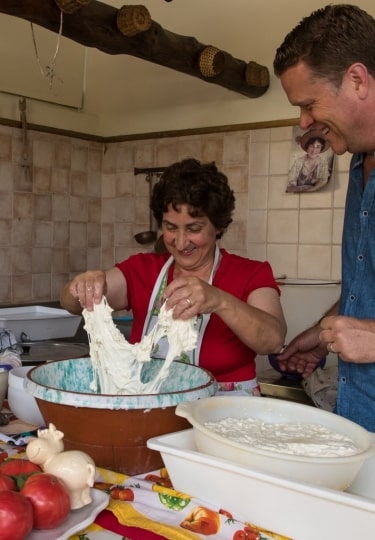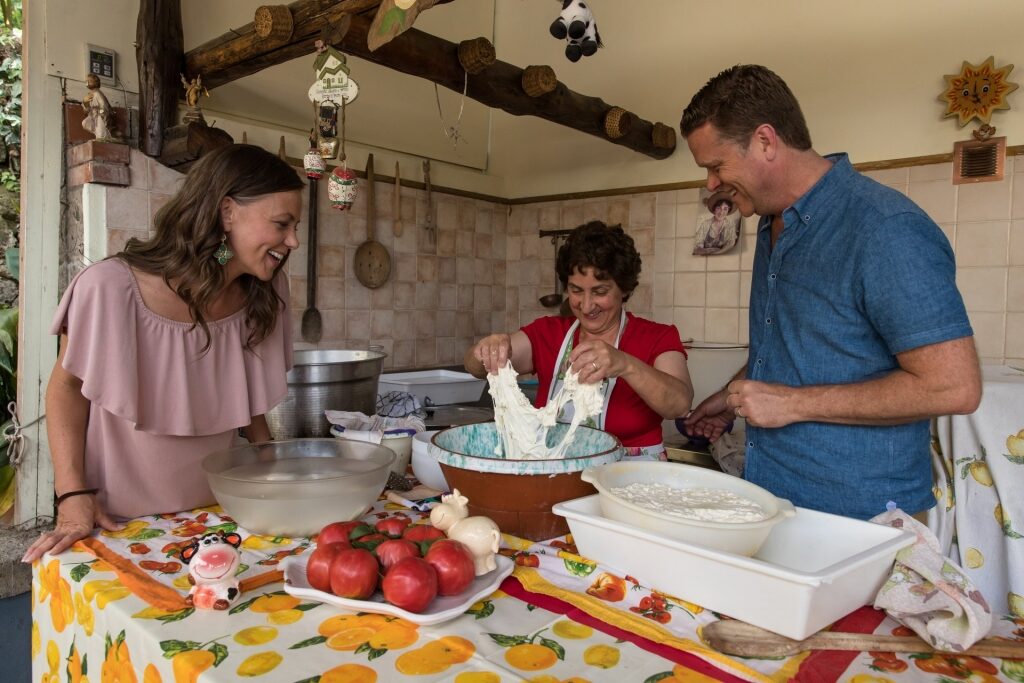Italian food culture is as rich as carbonara, as passionate as a Puccini opera, and as factional— yet unified—as a Roman mosaic.
The topic of national cuisine often brings Italians together.
Yet it also has the power to divide, as this shared cultural legacy is underscored by fierce local pride. While only a born and bred Italian can fully comprehend all of its tics, here’s a short guide to bring you up to speed with some essential elements of Italian food culture.
Multi-Course Meals
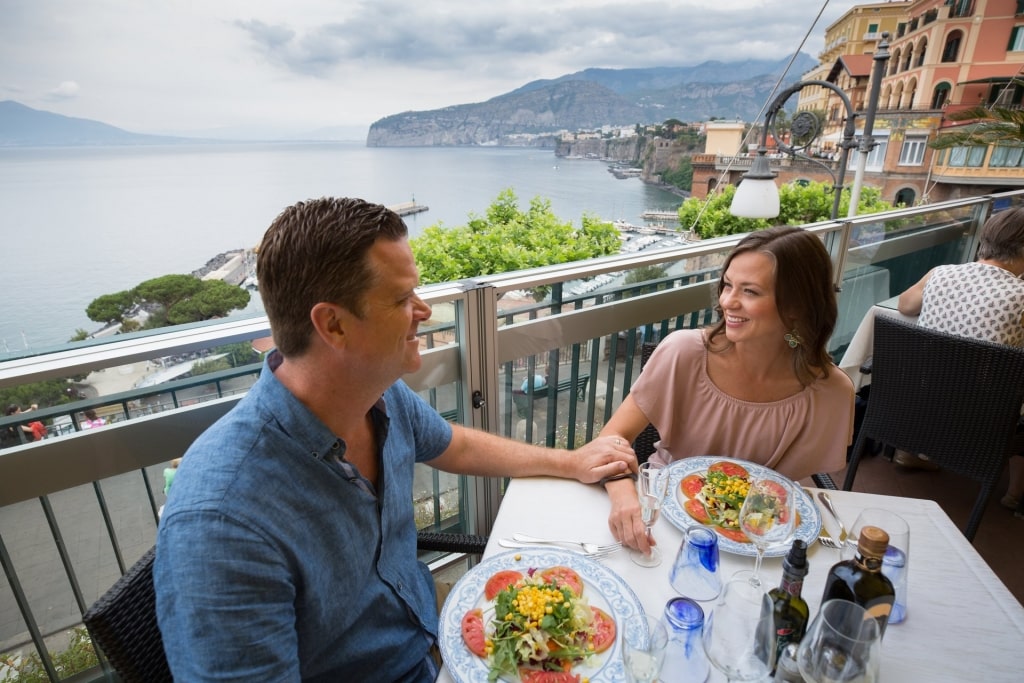
Sorrento
Italian food and culture are as closely intertwined as anywhere in the world, which is why meals in Italian restaurants have evolved to be as long as possible. Many first-time visitors to the country can find themselves baffled by the menu.
The common western format of “appetizer, main, and dessert” is augmented into a gastro-symphony that can include up to eight parts. Italian wedding banquets can push the course count to a heart-fluttering fifteen!
Before you reach for the antacid, rest easy knowing that three of these courses are primarily drinks-based. The aperitivo that kicks off the meal is a preamble intended to stimulate the appetite—think: a bubbly flute of Prosecco served alongside olives and ribbons of prosciutto.
At the tail-end of the meal, you’ll be offered an espresso before a glass of grappa or some other liqueur or spirit with digestion-aiding properties; hence the course’s name: digestivo.
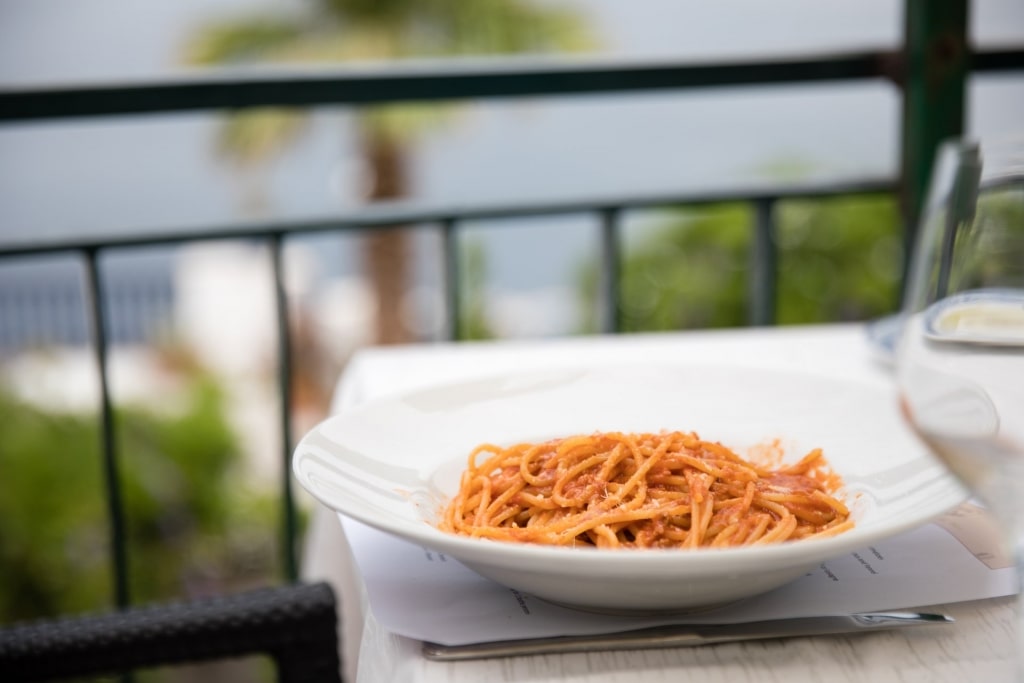
Pasta
Back to the beginning, and following the aperitivo is the antipasti, usually a light starter of marinated fish or crostini or similar. The primi is the first hot dish, most often pasta (but can also be risotto or soup) and generally meat-free. The carnivores perk up with the arrival of the secondi, best considered as the typical main dish, that offers meat or seafood alongside the separately plated contorno greens.
If the contorno has not incorporated a salad, then there’s a separate salad course to freshen up the palate ahead of your formaggi e frutta (cheese and fruit). After your dip into Italy’s impressive cheese heritage, you arrive at the dolce (sweet) course. Perhaps now it becomes clear why caffè has become such an essential element of the Italian meal structure.
La Cucina Povera
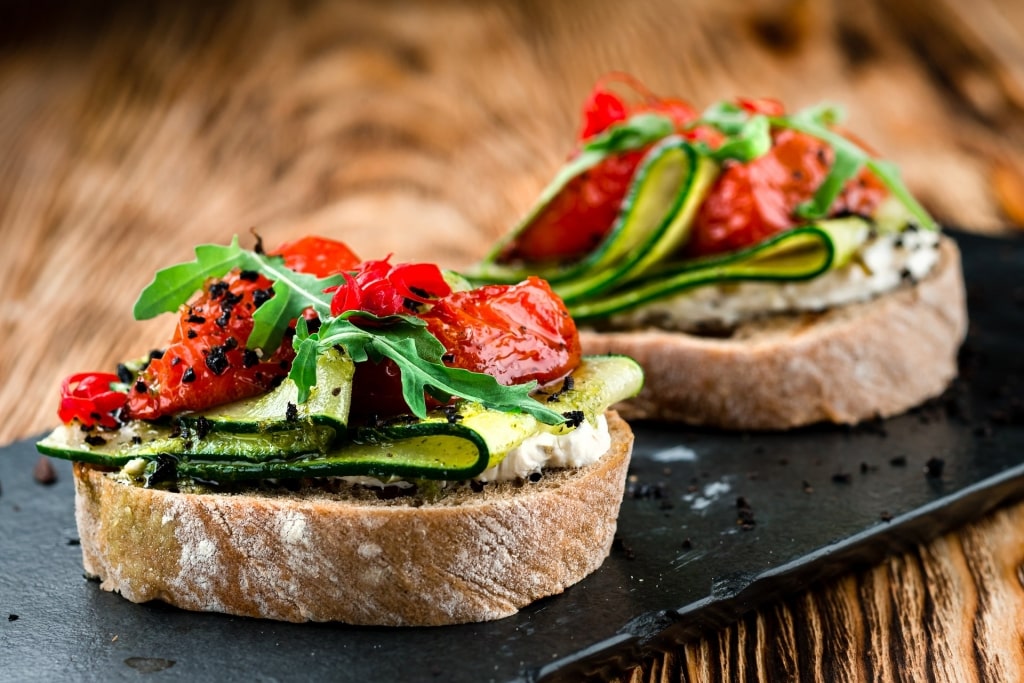
Bruschetta
An influential philosophy of cooking, la Cucina Povera translates as “frugal kitchen.” Its essence involves cooking with whatever ingredients you have at hand, and to do so with as little waste as possible.
It’s a philosophy born from the experiences of Italy’s impoverished rural population. Today, numerous iconic Italian dishes and staples owe their existence to the humble origins of la cucina povera.
Recipes such as pangrattato, ribollita, and antipasto-mainstay bruschetta were all inspired ways of gathering further use out of a stale loaf of bread. World-famous prosciutto was cured meat that was originally intended to supply hits of protein for the poor deep into winter. Biscotti were originally baked twice to expel as much moisture as possible and create crunchy almond treats with as much as extended shelf life as possible.
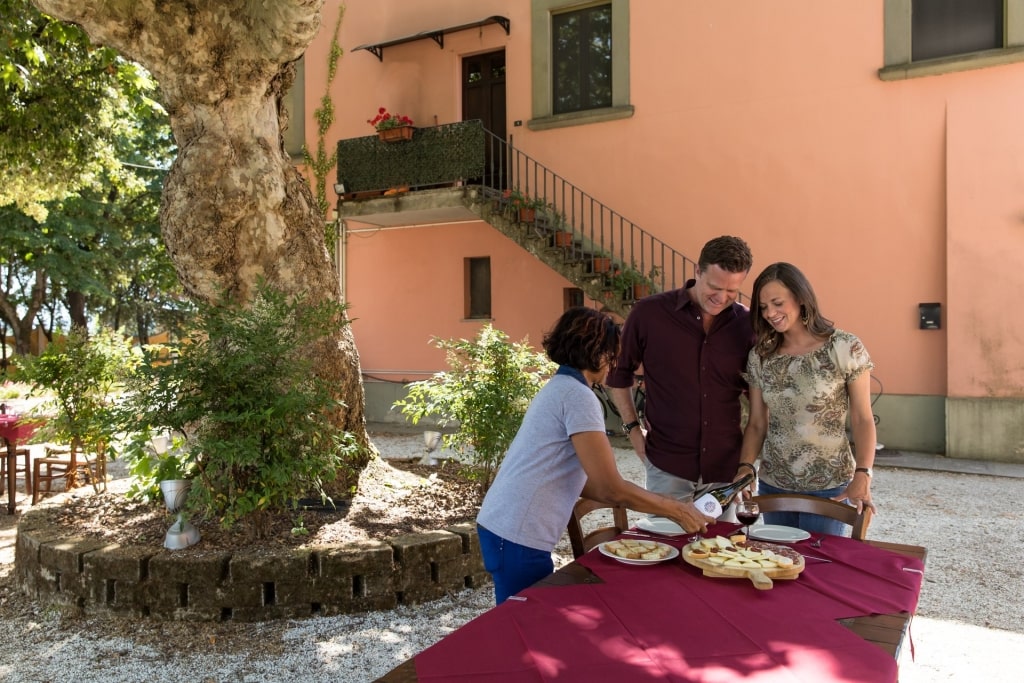
Florence
Today, the hard-won fruits of cucina povera are the dishes that visitors to Italy are often most keen to try in their native setting. In the kitchen, it remains a philosophy that challenges chefs to embrace constraints, source the finest seasonal ingredients, and express the flavors of those ingredients with as little manipulation as possible.
You’ll find this minimalist philosophy of food celebrated in village trattorias as well as in Michelin-starred restaurants.
Read: Incredible Tuscan Food to Try
Coffee Culture
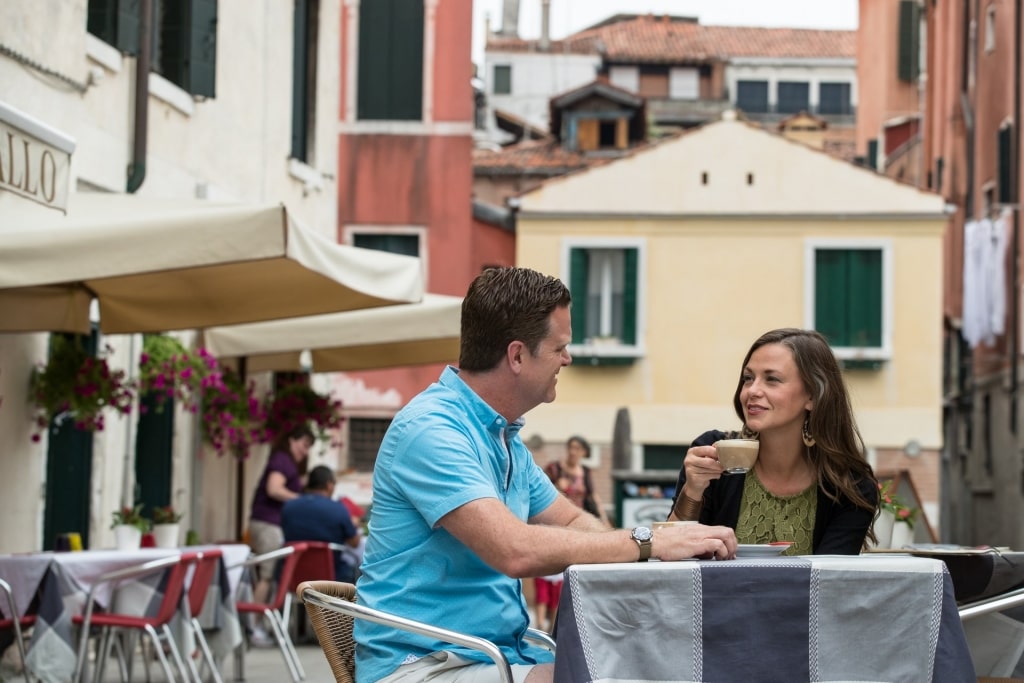
Venice
With the country’s reputation as the coffee capital of the world, Italians have become ritualistic about how they imbibe their favorite source of caffeine. (For example, cappuccinos or other milk-based coffees are strictly for breakfast only.)
While coffee arrived in Venice back in the 1500s, it was the creation of the espresso machine at the tail-end of the 19th century that really set Italians on the path to deep arabica addiction.
Indicative of the strength of Italian coffee culture, Starbucks—prevalent throughout much of Europe—has only recently opened its first few shops in Italy.
Read: How to Order Coffee in Italy Like an Italian
Food Fights
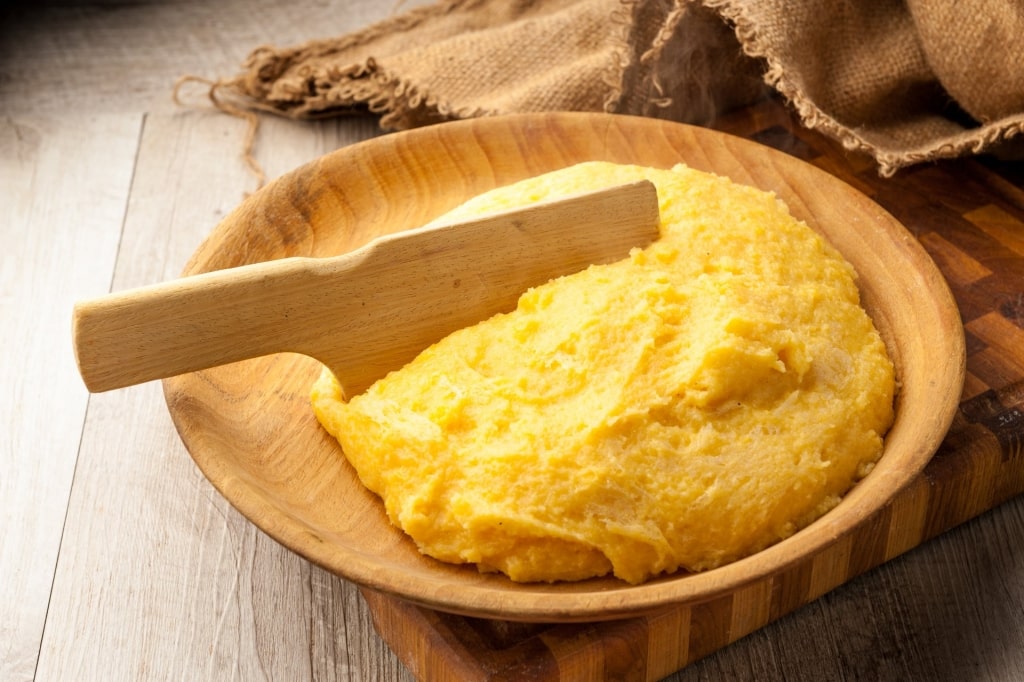
Polenta
With so much passion seasoning Italian food culture, it probably comes as little surprise that there is some regional, food-related name-calling. Lombards and their northern cousins, the Venetians, have been deemed the “polentoni” (polenta eaters); Tuscans are the “mangiafagioli” (the bean-eaters); while the Neapolitans were historically the “mangiamaccheroni” (macaroni eaters).
And while these seemingly innocuous slurs carry greater social weight than might be gleaned at first read, taken on their own they do helpfully highlight what you can expect from each region’s cuisine.
Polenta has been a filling mainstay of northern Italian food since forever, with ingredients evolving from a mix of grains (including pseudo-grains like buckwheat) into a primarily cornmeal mush. The Italians have enlivened this mush through the addition of herbs, grilled meats, and succulent porcini mushrooms, among other delectable options.
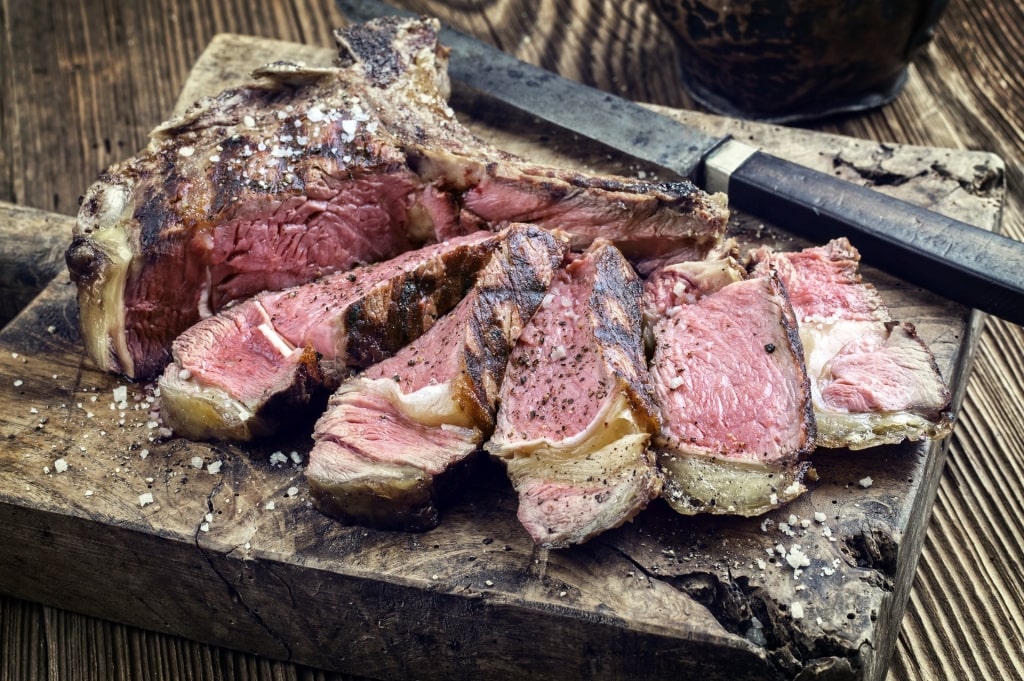
Florentine steak
If you’re after fiber, head for the Tuscan hills. There’s ribollita, a vegetable stew flooded with creamy cannellini beans; fagioli all’uccelletto (herby baked beans); acquacotta (peasant soup with cabbage and beans, and the list goes on. Don’t fret if you’re not a big mangiafagioli yourself—Tuscany is also the land of the Florentine steak, among other examples of tremendous bean-free cuisine.
Pasta, meanwhile, has long been a part of Italian food and culture throughout the peninsula (with lasagne thought to be the oldest form, cooked by the Ancient Romans). Meanwhile, dried pasta is believed to have come into Italy through Sicily, brought by the island’s Moorish conquerors.
And while “mangiamaccheroni” may have fit Naples like a glove in the late 18th century when it was awash in pasta shops, today, this vibrant city in the shadow of Vesuvius is probably better known as the home of Neapolitan pizza.
Sunday Lunch

On Sundays throughout Italy, it’s expected that a family will gather over a long lunch at their parents’ home. And this doesn’t just apply to children and teens still installed in their poster-decorated rooms.
It’s generally agreed that Italians have perfected the art of dining. Their meals are about enjoyment and taking one’s time—as the Italian saying goes, a tavola non s’invecchia or “at the table one does not age.” This outlook on the unhurried enjoyment of mealtimes is honed at home.
Alongside the general bonhomie, Sunday lunch is also a time for the Italian family to strengthen familial bonds, iron out any issues, and gossip about the issues of the day.
Recipes served on Sundays are usually family favorites, and the reassurance that the Italian family unit finds in these familiar flavors helps affirm the family’s identity. If these recipes and their sacred preparations are challenged by outsiders offering an alternative take on the recipe, the defensive reaction can be spectacular.
Pantry Essentials
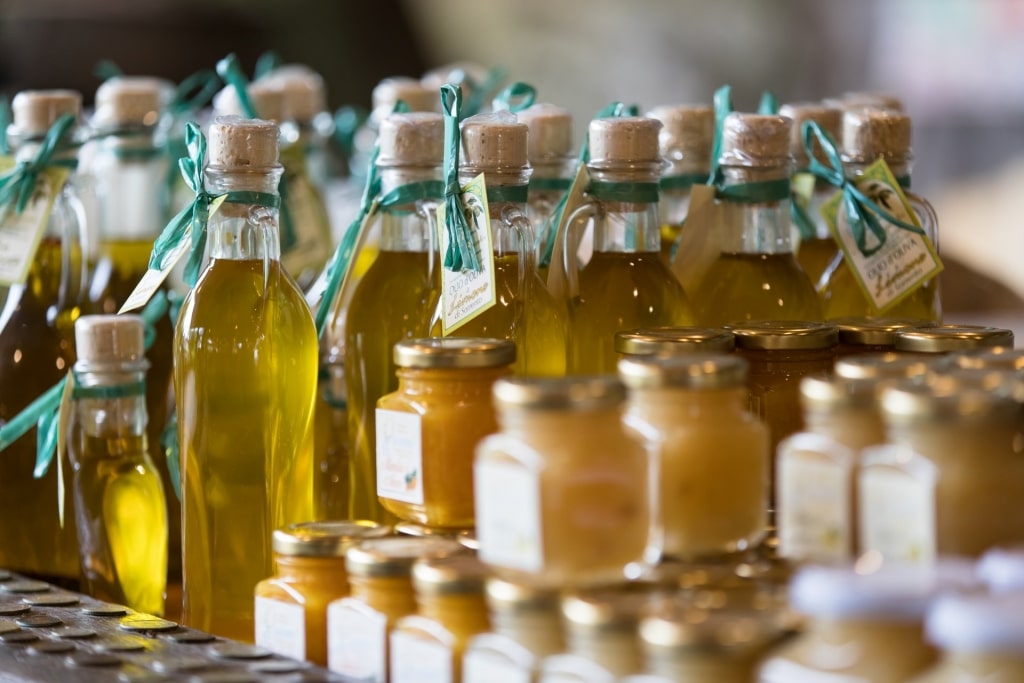
Olive oil
Besides the omnipresent pizza and pasta, one of the ways that Italian food and culture remain current in our daily consciousness is through its standard-bearing pantry essentials.
While olive oil has been present in numerous Mediterranean countries for around 6,000 years, it’s since become established as a symbol of Italian food culture. Examples of how seriously Italians take their olive oil involve how they tend to trust only oil sourced from a relative’s smallholding, or how, in trendy cities like Florence, you’ll find olive oil tastings led by professional olive oil tasters.
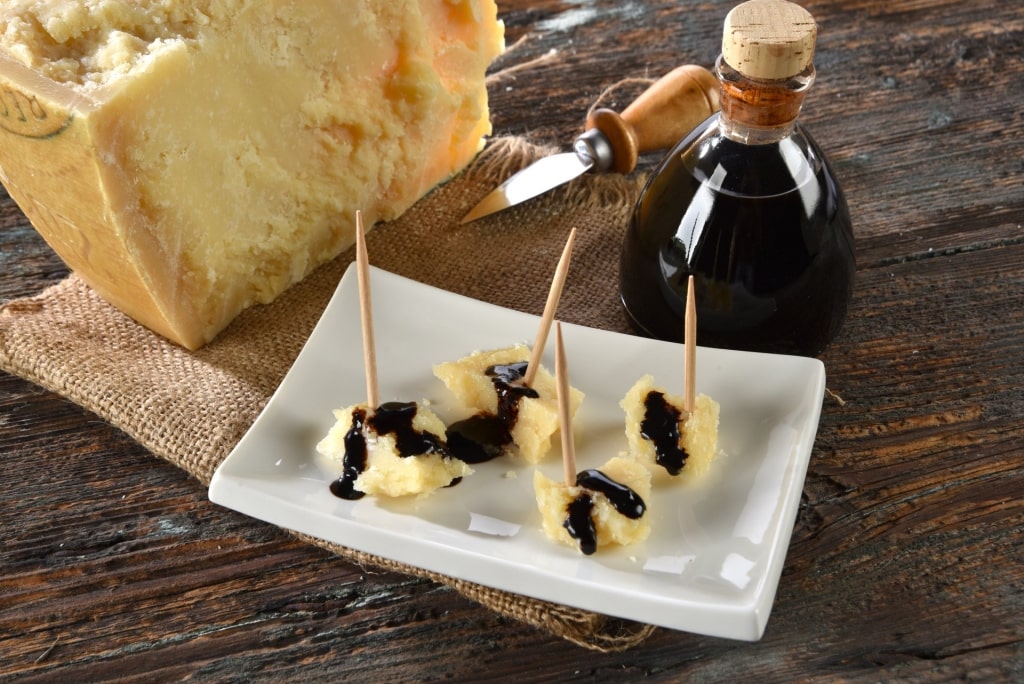
Balsamic vinegar
Another emblematic Italian pantry essential is balsamic vinegar. This viscous, inky condiment has been produced in the Tuscan city of Modena since 1605. Referred to as the “black gold of Modena,” balsamic vinegar is produced at varying levels of quality. You can buy basic industrially-produced versions best suited to cooking all the way up to top-tier expensive “tradizionale” vinegar that have been aged in barrels for up to a century.
Then there’s Parmigiano Reggiano and its rival hard cheese Grana Padano. Another prime example of Italian adherence to ancient methods of production, Parmigiano Reggiano’s creation follows a mostly unchanged Benedictine recipe from the 12th century. Today, it supplies a drizzle of tangy snow across bowls of pasta worldwide. It’s even been eaten in space since 1996 after two Italian astronauts packed it for the trip.
Italian cuisine is literally out of this world.
Read: What to Eat in Bologna
Michelin Magic
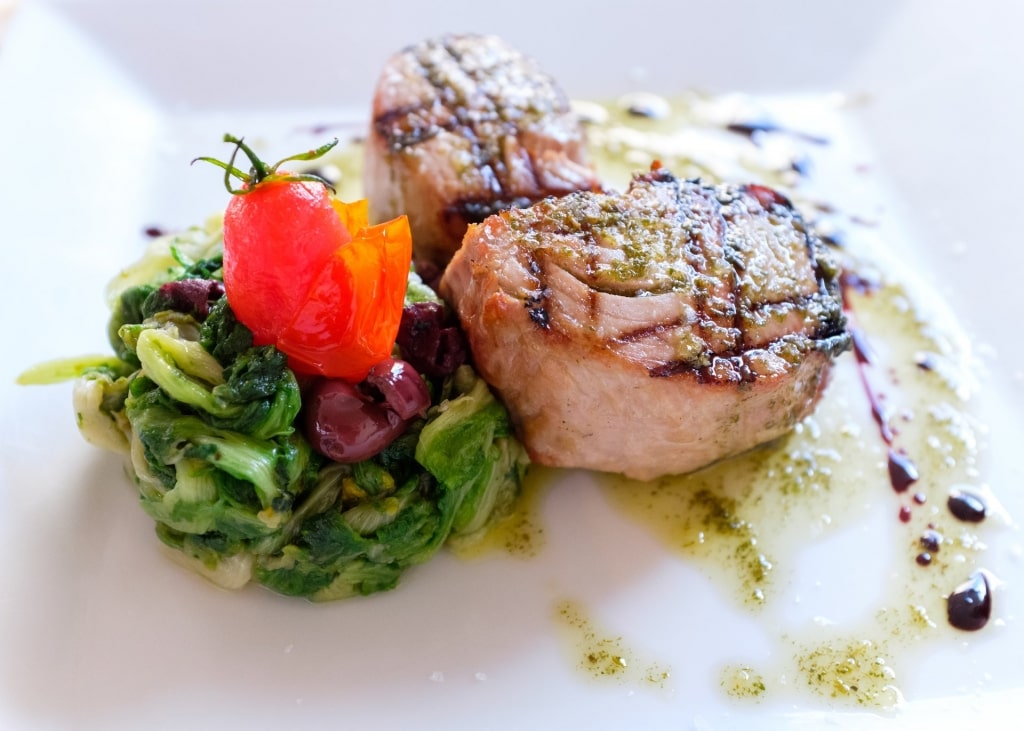
While recent editions of the Michelin Guide have seen Italy accumulate more and more of these esteemed culinary stars, it used to be widely remarked upon how surprising it was that it hadn’t garnered more.
For some, it might be surprising to learn that Italian cuisine was not always regarded with the same degree of respect that it enjoys today. Part of this was due to the representation of Italian food culture abroad by value trattorias, their check-cloth tables ornamented with plonky table wine served in corny straw jackets. Both this variety of restaurateur and the domestic wine industry was focused on volume over quality.

Barolo wine
In the second half of the 20th century, that all began to change. Pride in Italian food and culture grew, and its simplicity began to be recognized as a counter-philosophy to French cuisine, rather than a poor relation. Today, wines like Barolo and Brunello di Montalcino are mainstays in collectors’ cellars while the straw jackets are (mostly) confined to the wine bins of history.
The country’s pride in its heritage and spirited defense of traditional methods, however, has ensured that any experimentation with Italy’s culinary formula is frowned upon. And this strict adherence to traditional methods and tastes has been, in part, responsible for stymying the swifter accumulation of stars.
However, as the upward trend demonstrates, the country is capable of change, but with Italian food culture being such a wonderful thing, you can hardly blame them for an “if it ain’t broke, don’t fix it” attitude.
Experience Italian food culture—as well as the country’s elegant architecture, stunning coastline, and immense artistic heritage—on a cruise to Italy. Browse our cruise itineraries online and book a cruise vacation to this stunning country today.
